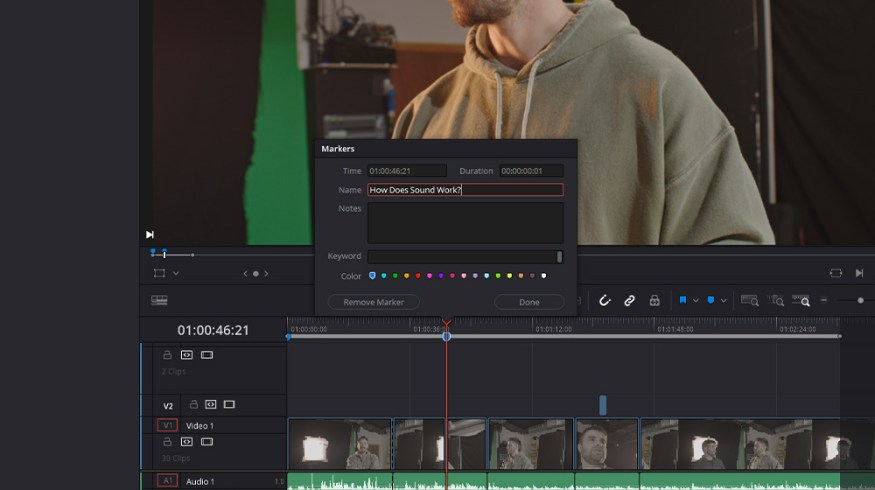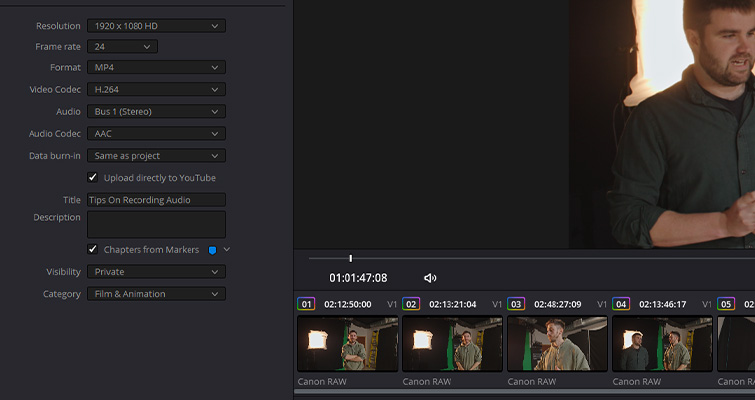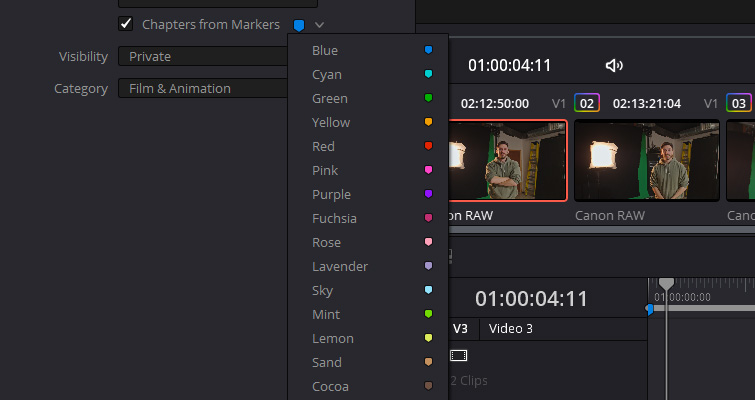
How to Add YouTube Chapters Directly from DaVinci Resolve
Today, we combine two previously separate tips that are now combined for one efficient process thanks to DaVinci Resolve’s winter update.
A few years back, Resolve offered the fantastic and time-efficient function of uploading directly to YouTube. While I still prefer previewing the exported video before uploading it to social media, the proficiency of the function can’t be underestimated.
If you have several short videos to export and upload, cutting out the middle process is undoubtedly a time-saver.
The second aspect, which I have also covered over on the Shutterstock blog, is how chapters within YouTube videos can improve your audience engagement. Chapters appear within the playback as clickable sections and are easily created by adding the correctly-formatted timestamp within the description.
However, what if you’re both an avid user of Resolve and of adding YouTube chapters? Well, now, thanks to the recent 17 updates, you can do both of those things in one proficient manner.
Let’s learn how.
Adding Chapters to YouTube from Resolve
Realistically, you’d want to do this process as you edit to be more proficient with your time. However, let’s run through the process as if you’ve already completed your edit.
With your project edited and ready to render, you’re going to want to revisit your timeline and input timeline markers (M) to identify where the chapters should begin.
Note: To activate the chapter function on YouTube, your first marker must start at 00:00.

The metadata of the markers will be used to transfer the chapter information to YouTube. Therefore, it’s important to make sure that the markers are the same color (we’ll explain why in a moment). You want to give each marker a chapter-like title, as seen in the image below.

When you’ve added the markers, you’ll now want to go to the delivery page, select the YouTube tab, and enter the desired upload settings.
Of course, you’ll need to link your YouTube account with Resolve, too.
Now, instead of hitting Add to Render Queue, you’ll first want to select Chapters from Markers.

The markers you have placed on the timeline will be used to create the parameters for the YouTube chapters.
However, you may notice that you can change the color of the markers Resolve uses to withdraw the chapter information from.
This is nice because, as initially noted, adding the markers to the timeline after your edit isn’t that efficient; however, you may also feel like adding markers during your edit is self-sabotaging as your edit is in a continuous state of development.

But, by directly selecting the color of the marker being used as YouTube chapters, you can add these markers early within the editing stage.
When your video is uploaded to YouTube, you’ll find the chapter information readily stored within the description box. However, as noted in YouTube’s help section:
Note: Not all videos are eligible for automatic chapters, and not all eligible videos will have automatic chapters. If the channel has any active strikes or the content may be inappropriate for some viewers, the video chapters feature won’t be available.
The chapters feature requirements:
- Make sure the first timestamp that you list starts at 00:00.
- Your video should have at least three timestamps listed in ascending order.
- The minimum length for video chapters is ten seconds.
I have to be honest, this isn’t a feature I can ever see myself using, but it’s nice for the constant vloggers and video creators who often put out content that’s later segmented into chapters.
If this feature interests you, but you’re not familiar with DaVinci Resolve, be sure to check out the tips below:





